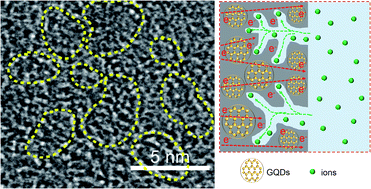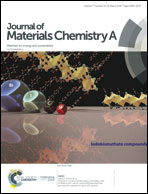Boosting the supercapacitor performance of activated carbon by constructing overall conductive networks using graphene quantum dots†
Abstract
Although high-surface-area activated carbons have been widely used for supercapacitors, they usually have limited capacitive and rate performances primarily because of the low conductivity and sluggish electrochemical kinetics caused by their amorphous microporous structure. Here, we report a simple strategy to boost the electrochemical performance of activated carbons by embedding highly crystallized graphene quantum dots. Benefiting from the formation of the overall conductive networks, the charge-transfer and ion migration kinetics of the activated carbon are significantly improved, facilitating electrolyte ion transport and storage in deep and branched micropores. As a result, the graphene quantum dot embedded activated carbon, possessing a microporous structure with a specific surface area of 2829 m2 g−1, achieves a remarkably high electric double-layer capacitance of 388 F g−1 at 1 A g−1 as well as excellent rate performance with 60% capacitance retention at 100 A g−1 in a two-electrode system. The capacitive and rate performances are much higher than not only those of the activated carbon without graphene quantum dots, but also those of most porous carbons reported in the literatures. This strategy provides a new route for designing advanced porous carbon materials for high performance energy storage.



 Please wait while we load your content...
Please wait while we load your content...